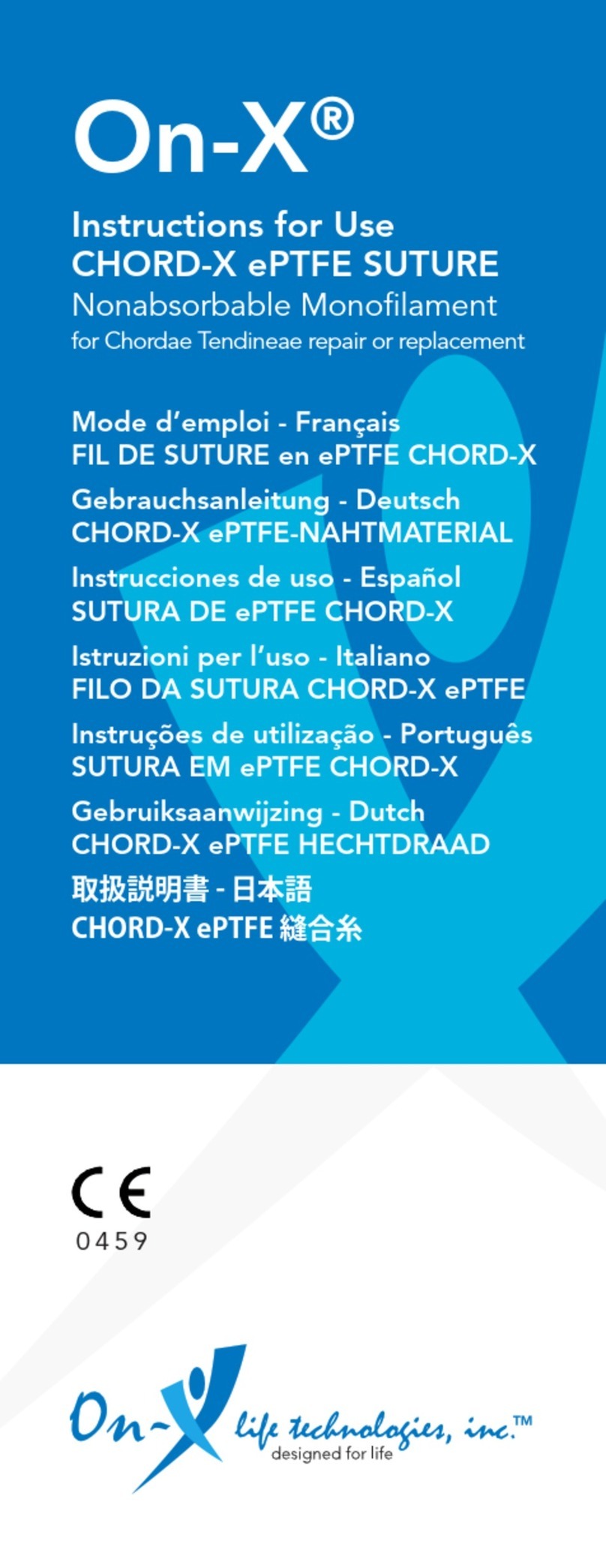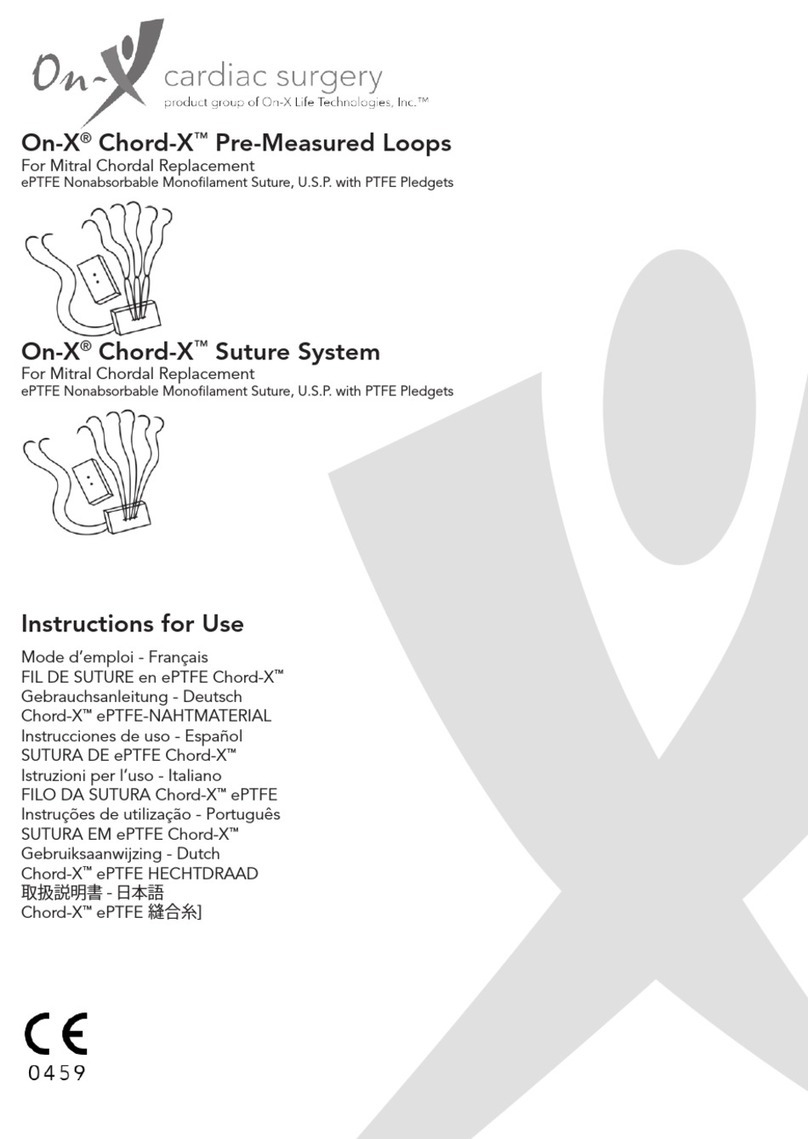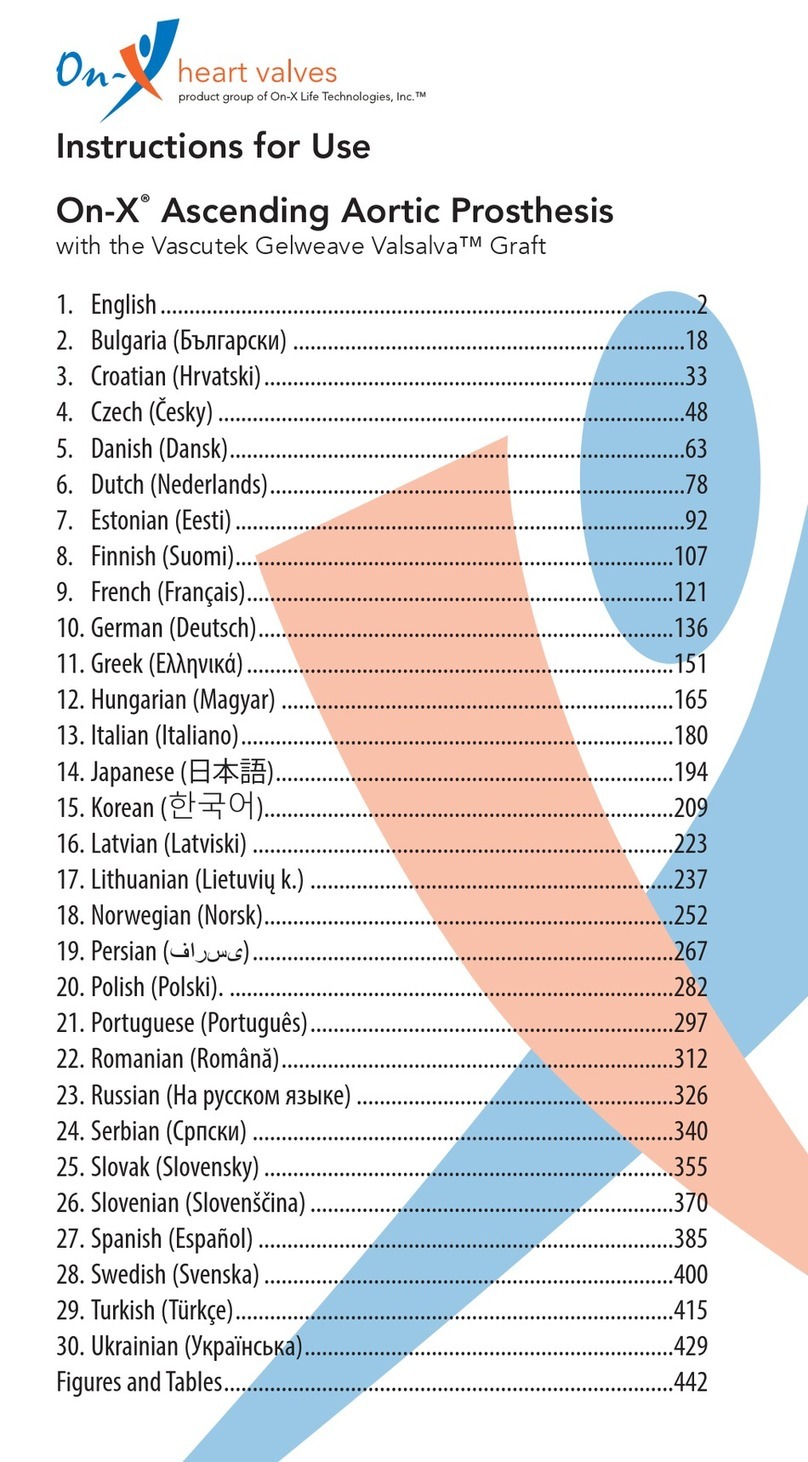8
Instrument Handle
The instrument handle (Figure 4) facilitates holding the
valve or the rotator during surgery. The instrument handle
is comprised of a grip, a bendable stem, and a tip.
Rotator
The valve rotator (Figure 5) is used for reorienting an in
situ valve and may be used to verify leaflet mobility. The
rotator consists of a plastic head with a centrally located
leaflet probe and an attached handle.
The rotator may be used with or without the instrument
handle attached. To attach the rotator to the instrument
handle, insert the instrument handle tip directly into the
slot on the end of the rotator handle. The rotator snaps
into place after the application of a light insertion force.
Leaet Probe
The leaflet probe (Figure 6) is a flexible rod with tapered
ends. The leaflet probe may be used to gently move the
leaflets to verify that they open and close freely.
WARNING: DO NOT sterilize instruments with any
method of sterilization other than steam. Damage
to some items could result from use of other
sterilization methods.
WARNING: The rotator must be removed from
the handle after use and prior to cleaning. A force
greater than the insertion force is required to
remove the rotator from the instrument handle.
9. DIRECTIONS FOR USE
WARNING: DO NOT use the On-X Prosthetic Heart
Valve if:
• the prosthesis has been dropped, damaged, or
mishandled in any way;
• the expiration date has elapsed;
• the tamper evident seal is broken;
• the serial number tag does not match the serial
number on the container label.
9.1 Physician Training
No special training is required to implant the On-X
Prosthetic Heart Valve. The techniques for implanting
this prosthesis are similar to those used for any
mechanical heart valve prosthesis.
9.2 Sterilization and Resterilization
The On-X Prosthetic Heart Valve is provided sterile.
If the sterility expiration date has passed or if upon
removal from the outer box, the valve container is
damaged or the sterility barrier is broken, do not use
the valve. Call On-XLTI Customer Service and arrange to
return the valve and receive a replacement.
WARNING: If during surgery the valve is removed
from its container but not used, it must not be
repackaged or resterilized. In this situation, the valve
must be returned to On-XLTI. Call Customer Service for
information before any return is made.
WARNING: Do not resterilize the On-X Prosthetic
Heart Valve.
9.3 Handling and Preparation Instructions
CAUTION: Handle the prosthesis with only On-XLTI
On-X Prosthetic Heart Valve Instruments. Only On-
XLTI On-X Prosthetic Heart Valve sizers should be
used during the selection of the valve size; other
sizers may result in improper valve selection.
CAUTION: Avoid contacting the carbon surfaces
of the valve with gloved fingers or any metallic or
abrasive instruments as they may cause damage to
the valve surface not seen with the unaided eye that
may lead to accelerated valve structural dysfunction,
leaflet escape, or serve as a nidus for thrombus
formation.
CAUTION: Avoid damaging the prosthesis through
the application of excessive force to the valve orifice
or leaflets.
Figure 4: Instrument Handle
Figure 5: Rotator
Figure 6: Leaflet Probe
8.5 Accessory Cleaning and Sterilization
Instruments for implantation of the On-X Prosthetic
Heart Valve are supplied separately, NON-STERILE, and
must be cleaned and sterilized prior to use. Standard
hospital surgical instrument cleaning procedures
must be used. Note: the metallic instruments are
made of titanium. The plastic instruments are made of
polyphenylsulfone. Materials used in these instruments
can withstand standard steam and flash steam
sterilization.
WARNING: These instruments are NOT provided
sterile. They must be properly cleaned and sterilized
prior to each use.






























